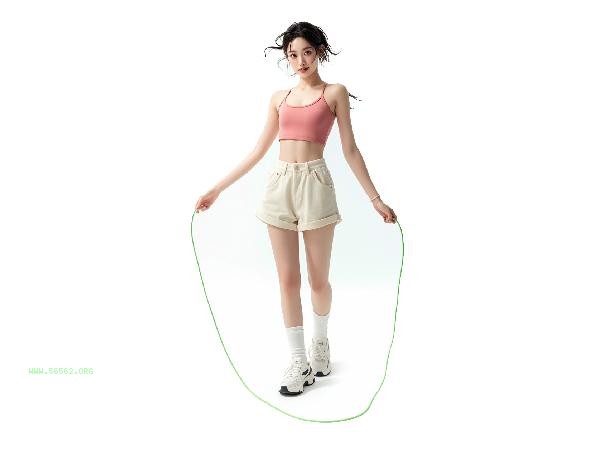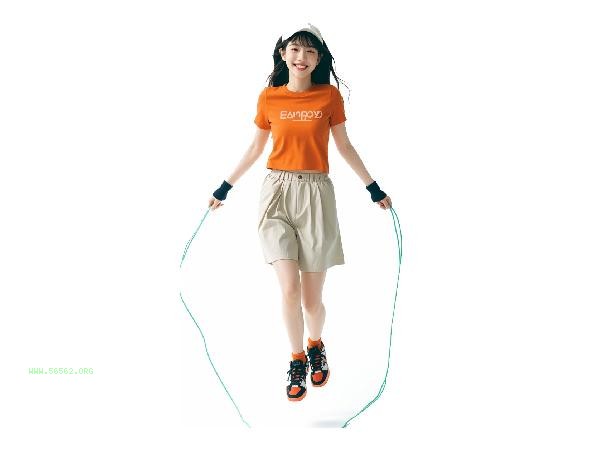Women who jump rope to lose weight need to master the correct posture, frequency, duration, and precautions, mainly including adjusting the length of the jump rope, maintaining core stability, controlling jumping height, choosing suitable ground, and combining dietary management methods.

1. Adjust the length of the skipping rope
Step on the middle of the skipping rope with both feet, hold the handle with both hands and straighten it upwards. The end of the rope handle should be located between the chest and armpits. Too long can easily cause tripping, while too short can increase arm burden. Beginners can first practice rhythm with cordless skipping rope, and then switch to standard rope after adapting. When jumping rope, the upper arm should be close to the body, and the lower arm should naturally hang down. Use the wrist to shake the rope instead of the shoulder.
2. Maintain core stability
Tighten abdominal muscles and keep the pelvis in a neutral position to avoid leaning forward or backward. Keep your eyes level ahead and don't look down at your feet. Relax and sink your shoulders, maintain a rhythmic breathing, and it is recommended to use nasal and oral breathing. Continuous exertion of the core muscle group can protect the lumbar spine, enhance fat burning efficiency, and avoid back pain caused by posture errors.
3. Control jumping height
When jumping, it is advisable to be 2-3 centimeters above the ground, just let the rope pass through. When landing, the forefoot touches the ground first, and the knee slightly bends to cushion the impact force. Excessive jumping can increase knee joint pressure and may lead to meniscus injury in the long term. Alternative jumps, tiptoe jumps, and other variations can be used to reduce impact, while those with a larger body weight can first transition to low impact movements such as elliptical machines.

Fourth, choose a suitable floor.
Priority should be given to elastic floors such as wooden floors and plastic tracks, avoiding hard floors such as cement floors and ceramic tiles. Outdoor skipping rope should avoid uneven areas such as sand, gravel, slopes, etc. It is recommended to wear professional skipping rope shoes or sports shoes with good cushioning performance, as a thin sole can easily lead to plantar fasciitis. Before jumping rope, check if there are any obstacles on the field to ensure a safe distance.
V. Dietary Management
After exercise, supplement high-quality protein such as eggs and fish in moderation, and pair with vegetables rich in dietary fiber such as broccoli and spinach. Avoid high sugar and high-fat diets to counteract the effects of exercise, and keep the daily calorie deficit within a reasonable range. It can be combined with strength training such as squats and plank support to improve basal metabolic rate. It is recommended to pause high-intensity skipping rope for the first three days before menstruation.

It is recommended to start gradually from 5-10 minutes per day, increase the duration each week, and ultimately maintain an effective fat burning time of 30-40 minutes. Perform dynamic stretching before and after exercise, and stop immediately if knee pain occurs. Skipping rope for weight loss requires long-term persistence, combined with regular sleep and drinking habits, to avoid pursuing rapid weight loss in the short term and causing physical damage. After weight loss, the skipping rope strength should be adjusted in a timely manner to prevent the occurrence of plateau period.








Comments (0)
Leave a Comment
No comments yet
Be the first to share your thoughts!